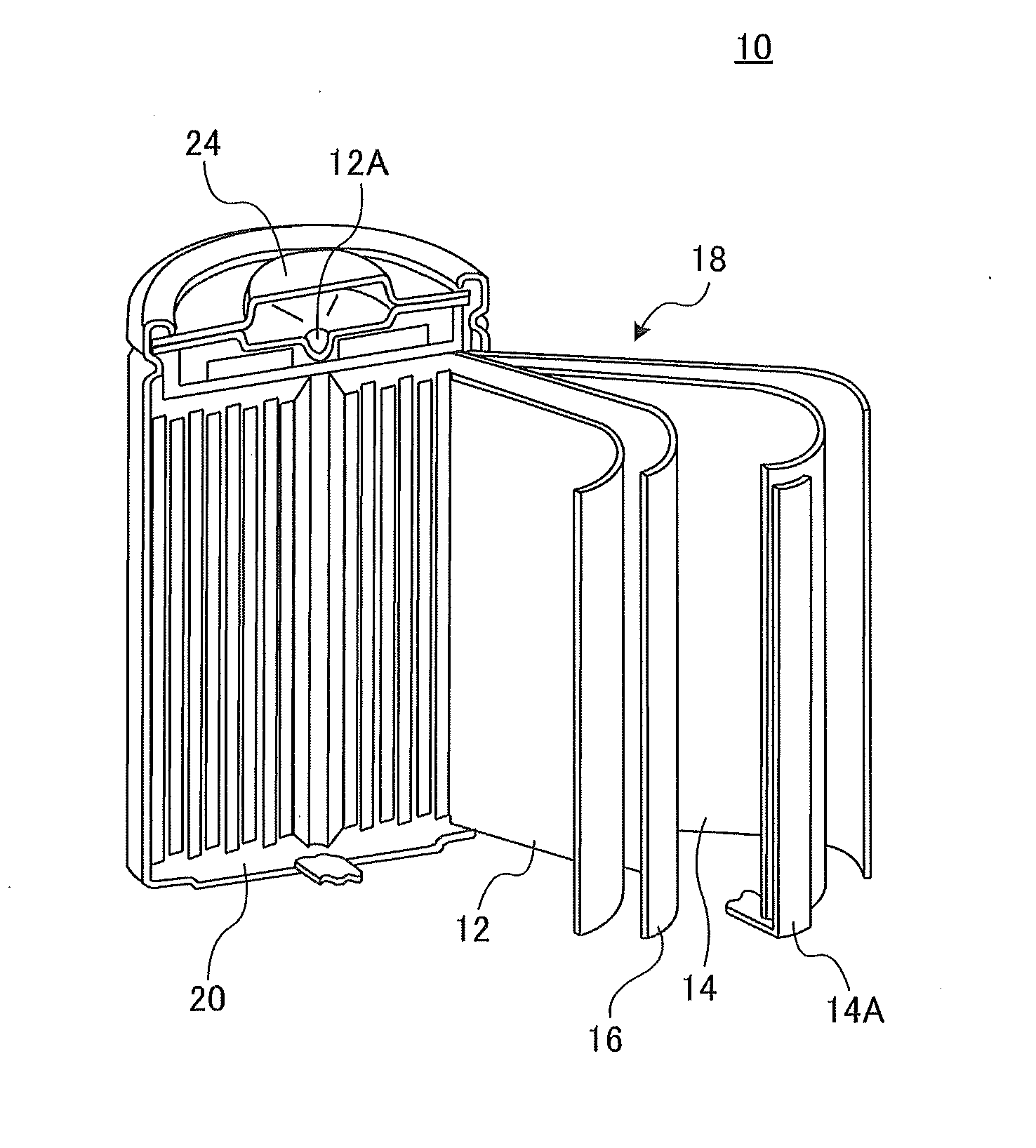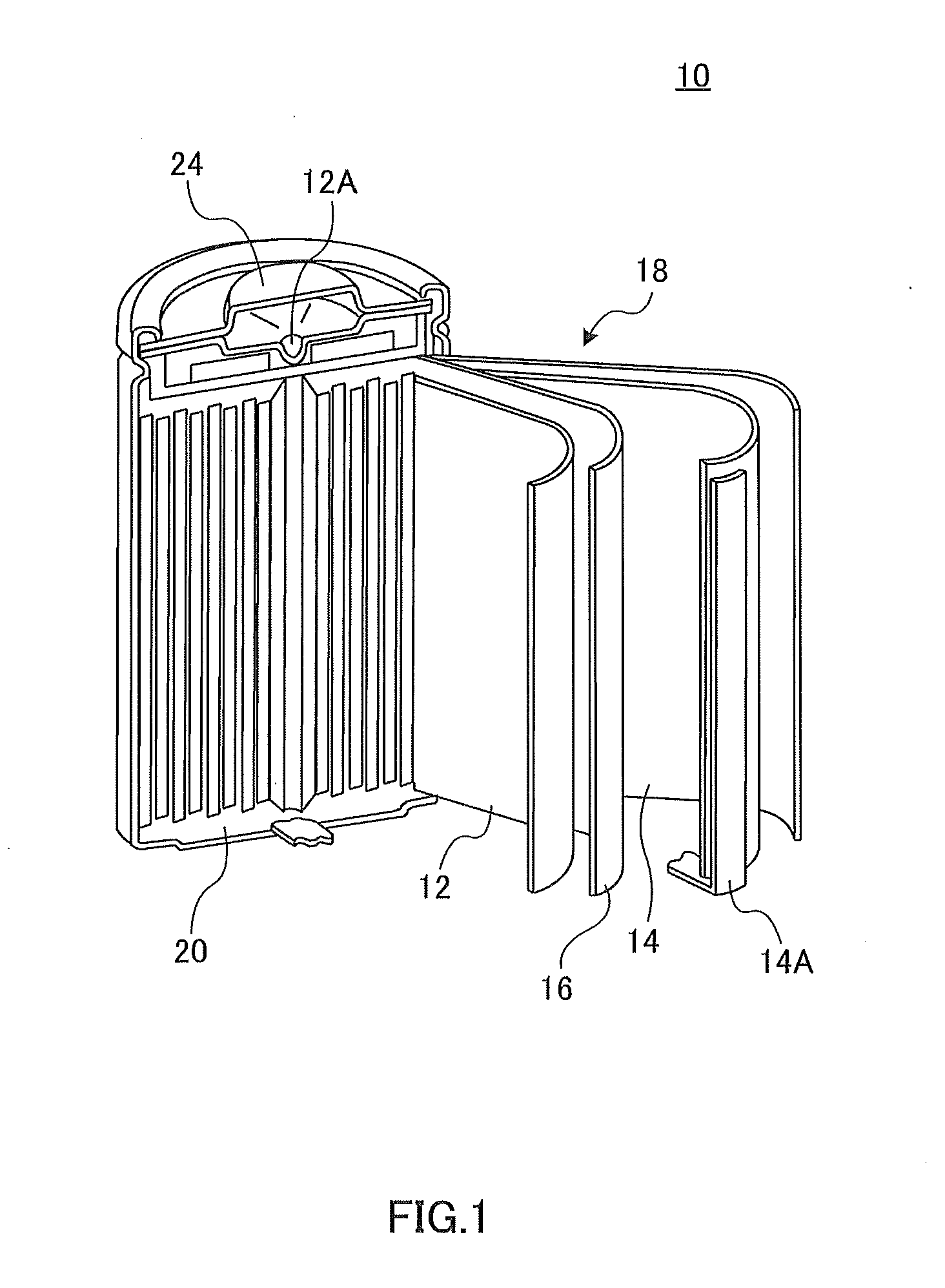Poly(4-methyl-1-pentene) resin composition, film containing same, microporous film, battery separator and lithium ion battery
a technology of polymethyl pentene and resin composition, which is applied in the direction of cell components, cell component details, transportation and packaging, etc., can solve the problems of reducing the efficiency of separators, and reducing the risk of abrasion, etc., and achieves a certain level of toughness, less prone to breakage, and high porosity
- Summary
- Abstract
- Description
- Claims
- Application Information
AI Technical Summary
Benefits of technology
Problems solved by technology
Method used
Image
Examples
example 1
Preparation of solid catalyst component
[0077]750 g of anhydrous magnesium chloride, 2,800 g of decane, and 3,080 g of 2-ethyhexylalcohol were reacted together at 130° C. for 3 hours to prepare a homogeneous solution. To this solution was added 220 ml of 2-isobutyl-2-isopropyl-1,3-dimethoxypropane, and stirred at 100° C. for a further 1 hour. The homogeneous solution obtained was cooled to room temperature. 3,000 ml of the solution was added dropwise to 800 ml of titanium tetrachloride maintained at −20° C. under stirring over a period of 45 minutes. Thereafter, the solution was heated to 110° C. in 4.5 hours. When the temperature reached 110° C., 5.2 ml of 2-isobutyl-2-isopropyl-1,3-dimethoxypropane was added, and the mixture was stirred at that temperature (110° C.) for a further 2 hour. After 2 hour-reaction, a solid was recovered by hot filtration, and resuspended in 1,000 ml of titanium tetrachloride and heated for 2 hours at 110° C. A solid was again recovered by hot filtration...
example 2
[0098]Melt-kneading was conducted in the same manner as in Example 1 except that the homopolymer (a-1) / copolymer (b-1) ratio was set to 30 / 70 by mass. The obtained pellet had a MFR of 25 g / 10 min. Film formation and film stretching were conducted to form a microporous film. The evaluation of the physical property of the microporous film is shown in Table 1.
example
[0099]Melt-kneading was conducted in the same manner as in Example 1 except that the homopolymer (a-1) / copolymer (b-1) ratio was set to 50 / 50 by mass. The obtained pellet had a MFR of 25 g / 10 min. Film formation and film stretching were conducted to form a microporous film. The evaluation of the physical property of the microporous film is shown in Table 1.
PUM
| Property | Measurement | Unit |
|---|---|---|
| mass % | aaaaa | aaaaa |
| melt flow rate | aaaaa | aaaaa |
| melt flow rate | aaaaa | aaaaa |
Abstract
Description
Claims
Application Information
 Login to View More
Login to View More - R&D
- Intellectual Property
- Life Sciences
- Materials
- Tech Scout
- Unparalleled Data Quality
- Higher Quality Content
- 60% Fewer Hallucinations
Browse by: Latest US Patents, China's latest patents, Technical Efficacy Thesaurus, Application Domain, Technology Topic, Popular Technical Reports.
© 2025 PatSnap. All rights reserved.Legal|Privacy policy|Modern Slavery Act Transparency Statement|Sitemap|About US| Contact US: help@patsnap.com


